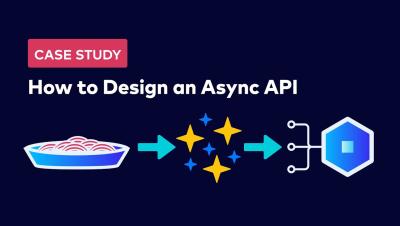Systems | Development | Analytics | API | Testing
%term
Optimize Mobile App Testing for Speed, Scale, and Coverage
Hosted By: Maxwell Newsom, Solution Engineer, Sauce Labs Ashwini Sathe, Senior Group Product Marketing Manager, Sauce Labs Background: As the mobile industry experiences explosive growth, delivering quality mobile apps at speed and maintaining a seamless customer experience has never been more important. In fact, after using Sauce Labs, customers improved release speeds by up to 50% and achieved a 46% uptick in weekly code deployments.
FI Transformation: T. Rowe Price's & State Street's Automation Journeys
Discover how Appian’s process automation platform has transformed technology procurement and legal departments, all aimed at catalyzing transformation within the organization. Our expert panel will delve into the adoption journey and share invaluable best practices for maximizing value across teams.
The Essential Guide to Understanding Every API Type
APIs, or application programming interfaces, allow different software systems to communicate. But different types of APIs exist. Each type serves a different purpose. And each type has its own pros, cons, and use cases. This article breaks down the main API categories—open, partner, internal, and composite. We also discuss the types of APIs based on the protocols they use. At the end of this article, you can confidently choose the right one for your needs.
Defining Asynchronous Microservice APIs for Fraud Detection | Designing Event-Driven Microservices
In this video, Wade explores the process of decomposing a monolith into a series of microservices. You'll see how Tributary bank extracts a variety of API methods from an existing monolith. Tributary Bank wants to decompose its monolith into a series of microservices. They are going to start with their Fraud Detection service. However, before they can start, they first have to untangle the existing code. They will need to define a clean API that will allow them to move the functionality to an asynchronous, event-driven microservice.
Beyond daily and weekly: Flexible build scheduling options in Bitrise
We've updated our build scheduler! You can now choose between our flexible scheduler for easy setup or use cron syntax for more precise control over your builds.
insightsoftware to Strengthen xP&A and Write-Back Capabilities in Qlik With Fiplana Acquisition
Deal will extend insightsoftware’s operational planning, reporting, and analytics capabilities in the Qlik ecosystem.
Decoding API Keys: Essential Uses and Security Best Practices
Understanding how to manage and protect an API key is crucial for anyone interacting with web services. This article outlines the process of generating and implementing API keys, along with strategies to secure them against potential threats, ensuring the security of your API key.
Log and Event Analytics on Databricks: Overview and Use Cases
Built on the foundation of Apache Spark, Databricks is a unified, open data lakehouse platform that empowers customers to efficiently and cost-effectively process, store, manage, and analyze large volumes of enterprise data.











